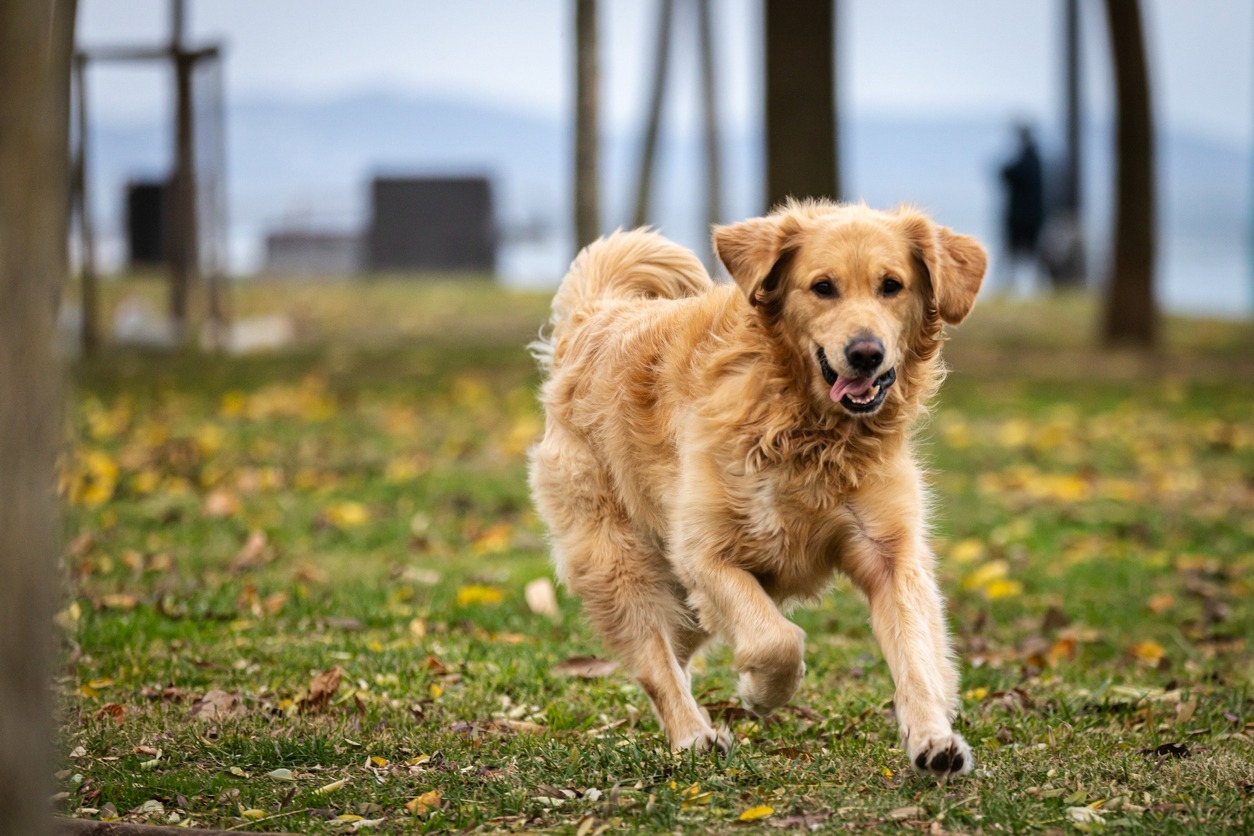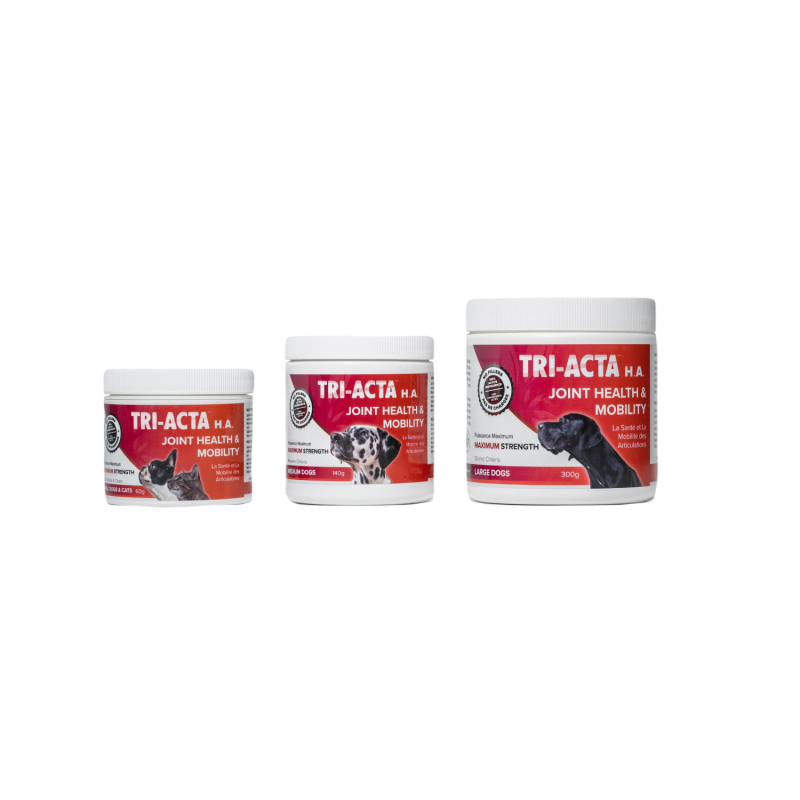Table of Contents
When you hear the words kidney disease from your vet, your first reaction is probably worry, quickly followed by questions. What does this mean for my dog’s health? What can I do to help? And most importantly: what should I be feeding them?
Kidney disease isn’t rare in dogs, especially as they age. In fact, a 2025 analysis found it affects up to 3% of the general dog population and as many as 10% of dogs seen in veterinary hospitals.
The good news is that the proper diet can make a world of difference.
The best dog food for kidney disease helps reduce the workload on the kidneys, supports overall health, and keeps your pup feeling more like themselves.
In this article, we’ll break down what to look for in kidney-friendly dog food, which ingredients help and which to avoid, and how nutrition plays a role in managing the condition.
Ready to sniff out the top picks? Let’s dig right in.
What Is the Best Dog Food for Kidney Disease?
When vets or nutritionists talk about the “best dog food for kidney disease”, they’re talking about formulas designed to reduce stress on the kidneys while still giving your dog enough energy and nutrients to thrive.
Just like taking care of a dog involves balancing exercise, grooming, and vet visits, kidney-friendly diets require balance across hydration, protein, and minerals.
Here’s what the best dog food for kidney health should include:
- High water and moisture content: Hydration is the biggest ally in kidney health. Moist dog food for kidney health helps flush toxins and keeps the urinary system moving, preventing common infections like dog UTIs.
- Moderate to low protein (within reason): Protein isn’t the enemy, but too much can overwork the kidneys. High-quality, easily digestible protein is key.
- Low phosphorus: High phosphorus levels accelerate kidney damage. Restricting it slows disease progression.
- Low sodium: Too much salt raises blood pressure and worsens kidney strain.
- Omega-3 fatty acids: These support kidney function, reduce inflammation, and promote overall organ health.
Prescription vs. Non-Prescription Diets
You might be wondering, does your dog need prescription food, or is a non-prescription diet good enough?
Prescription diets (e.g., like Hill’s k/d, Royal Canin Renal Support, Purina NF) are carefully formulated to hit all the kidney-friendly markers. They’re reliable and widely recommended, but they can be pricey.
On the other hand, non-prescription diets can sometimes work if your dog is in earlier stages of kidney disease, as long as they’re high in moisture, lower in protein, and balanced with the right nutrients.
The catch is that you’ll need to be diligent about label reading and, ideally, work with your vet to ensure that the labels are appropriate.
Dog Food Ingredients for Kidney Disease
|
Avoid |
Why |
Look For |
Why |
|
High-phosphorus ingredients (bone meal, organ meats, fish with bones) |
Excess phosphorus worsens kidney damage |
Low-phosphorus protein sources (egg whites, lean chicken, turkey) |
Easier on kidneys while still providing protein |
|
High-protein, low-quality meat byproducts |
Increases waste products kidneys must filter |
Moderate, high-quality protein |
Supports muscle without overloading kidneys |
|
Excess sodium (salt, salted meats, broths) |
Raises blood pressure, stresses kidneys |
Controlled sodium |
Maintains healthy blood pressure |
|
High-fat, greasy fillers (fried foods, fatty cuts) |
Hard to digest, may worsen kidney strain |
Omega-3 fatty acids (fish oil, flaxseed) |
Reduce inflammation, support kidney & heart |
|
Artificial preservatives (BHA, BHT, ethoxyquin) |
Potentially toxic, harder on kidneys |
Natural preservatives (Vitamin E, Vitamin C) |
Safe and antioxidant-supportive |
|
Low-quality fillers (corn, wheat gluten, soy) |
Adds calories without nutrients, stresses digestion |
Easily digestible carbs (white rice, pumpkin, sweet potato) |
Provide energy without burdening kidneys |
|
Excess calcium or vitamin D |
Can cause mineral imbalance and kidney strain |
Controlled minerals + added B-vitamins |
Support metabolism and energy |
|
High-phosphorus dairy (cheese, milk) |
Adds unnecessary phosphorus and fat |
Moisture-rich foods (wet food, broth without added sodium) |
Helps hydration, supports kidney function |
Best Canned Dog Food for Kidney Disease (Wet Food Picks)
A few brands consistently rise to the top when it comes to wet food for kidney disease.
These options focus on slowing the progression of kidney disease while keeping meals appealing enough for picky eaters, which is a common challenge for dogs managing this condition.
Why Wet Food Is Often Recommended for Dogs With Kidney Disease
One of the biggest challenges with kidney disease is dehydration. Because the kidneys aren’t filtering efficiently, dogs lose more water through urine, and this constant fluid loss puts them at risk of becoming dehydrated. Wet dog food for kidney health helps fill that gap.
With a moisture content of 70–80%, canned food delivers hydration at every meal, giving the kidneys a much-needed assist in flushing toxins from the body.
Beyond hydration, texture plays a role, too. Dogs with kidney disease often experience nausea, reduced appetite, or even oral discomfort. Wet food tends to be softer, easier to chew, and far more aromatic than kibble. Those stronger smells can be the difference between your pup refusing a meal and actually finishing the bowl.
There’s also the practical side. Wet food allows for easier portion control and mixing in medication or supplements. For dogs on multiple treatments, hiding a pill in canned food is far simpler than convincing them to swallow it whole.
Top 3 Wet Food Recommendations
With so many options out there, narrowing down the best wet dog food for kidney health can feel overwhelming.
To make it easier, here are three standout canned foods that check the right nutritional boxes and are commonly recommended by vets for dogs with kidney disease.
|
Feature |
Hill’s Prescription Diet k/d Chicken & Vegetable Stew (Wet) |
Blue Buffalo Natural Veterinary Diet KS (Kidney Support – Wet) |
Royal Canin Veterinary Diet Canine Renal Support D (Loaf in Sauce – Wet) |
|
Key Protein Sources |
Chicken, pork liver, egg whites (moderate-quality protein) |
Chicken, chicken liver, dried egg product |
Pork by-products, chicken, chicken liver |
|
Main Carbs / Fillers |
Carrots, rice, peas, rice starch, beet pulp |
Potatoes, carrots, potato starch |
Corn flour, wheat gluten, powdered cellulose, beet pulp |
|
Healthy Fats / Omegas |
Fish oil, flaxseed, chicken fat |
Fish oil, flaxseed |
Fish oil, chicken fat |
|
Kidney-Specific Additions |
ActivBiome+ Kidney Defense (prebiotics: betaine, oat bran, FOS); reduced phosphorus & sodium; added taurine, L-carnitine |
Controlled protein and mineral levels; antioxidants for cellular health |
Low phosphorus; antioxidant complex (Vit C & E, lutein, taurine); tailored to encourage appetite |
|
Moisture / Hydration |
High-moisture stew, boosts hydration |
High-moisture loaf/stew |
High-moisture loaf in sauce, helps hydration |
|
Unique Appeal |
Gut–kidney axis support; very palatable for picky dogs |
Natural, grain-free, antioxidant-rich formula |
Enticing aroma and texture; crafted for dogs with reduced appetite |
Most of the time, these foods need to be prescribed by a veterinarian or at least purchased from a vet office. Some vets have partnership websites, such as Mollies, where you can purchase veterinary-specific foods online once you enter the required prescription information.
Best Dry Dog Food for Kidney Disease (Kibble That Counts)
The best dry dog food for kidney disease offers dry formulas tailored for kidney support, with the same careful balance of low phosphorus, moderate protein, and added nutrients you’d find in their canned counterparts.
For picky eaters, many of these dry diets can also be softened with warm water or mixed with a little wet food to boost flavor and moisture.
When Kibble Is Preferred
Not every dog is a canned food fan. Some dogs simply prefer kibble, and in certain cases, it’s more practical.
- Storage: Dry food is easier to store and lasts longer once opened.
- Convenience: Less mess at mealtime, easier to measure out.
- Picky eaters: Some dogs like the crunch, and kibble can sometimes be mixed with water or wet food to add moisture.
Top 3 Picks: Best Dry Dog Food for Kidney Disease
Not every kibble on the shelf is suitable for dogs with kidney disease. The right dry dog food for kidney health needs to strike a delicate balance: keeping phosphorus and sodium levels low, moderating protein without stripping it entirely, and still providing enough calories, vitamins, and fatty acids to support overall health.
|
Feature |
Hill’s Prescription Diet k/d Dry (Kidney Care) |
Blue Buffalo Natural Veterinary Diet KS (Kidney Support – Dry) |
Royal Canin Veterinary Diet Renal Support A (Dry) |
|
Form |
Dry kibble |
Dry kibble |
Dry kibble |
|
Key Protein Sources |
Chicken, egg product, pork fat (moderate high-quality protein) |
Deboned chicken, dried egg product |
Chicken fat, brewers rice, corn gluten meal (moderate protein, adjusted for renal needs) |
|
Main Carbs / Fillers |
Brewers rice, corn gluten meal, whole grain corn, wheat |
Brown rice, oatmeal, potatoes, pea starch |
Brewers rice, corn, corn gluten meal, beet pulp, wheat gluten |
|
Healthy Fats / Omegas |
Fish oil, chicken fat, flaxseed (omega-3 & omega-6 support) |
Flaxseed, fish oil |
Fish oil, chicken fat (EPA & DHA) |
|
Kidney-Specific Additions |
Reduced phosphorus & sodium; added B-vitamins, taurine, L-carnitine, antioxidants |
Controlled protein/mineral levels; natural antioxidants |
Low phosphorus; antioxidant complex (vitamins C & E, lutein, taurine); appetite-stimulating “Aromatic” kibble |
|
Moisture / Hydration |
Dry kibble – hydration needs to be supplemented with water or wet food |
Dry kibble – hydration needs to be supplemented |
Dry kibble – often paired with wet renal diets for hydration |
|
Unique Appeal |
Clinically proven to slow kidney disease progression; trusted by vets |
Grain-free, natural ingredients, antioxidant-rich |
Designed to encourage appetite (strong aroma), energy-dense for smaller portions |
Tips for Adding Hydration (Broths, Toppers)
Hydration is one of the most powerful tools you have when supporting a dog with kidney disease. Even if you’ve chosen the right dog food for kidney health, adding moisture can make meals more effective and more appealing. Low-sodium broths (chicken, beef, or vegetable) are a great way to boost hydration while keeping flavor high.
Water toppers, goat’s milk, or pet-safe bone broths can also make meals more enticing for picky eaters. The key is to avoid anything high in salt, fat, or artificial seasonings. A splash of kidney-friendly broth can do wonders to keep your dog eating and hydrated.
Best Prescription Dog Food for Kidney Disease

When it comes to managing kidney disease, prescription dog foods are often the gold standard. You’ll gain peace of mind knowing your dog’s meals are tailored to support their health condition.
What Makes Prescription Formulas Different?
Prescription diets for kidney disease are carefully engineered to take pressure off the kidneys while still providing balanced nutrition. The science behind them is all about slowing the progression of chronic kidney disease and improving quality of life.
These formulas typically feature:
- Lower, controlled protein levels: Enough to maintain muscle mass, but not so much that the kidneys are overworked filtering waste byproducts.
- Restricted phosphorus: High phosphorus accelerates kidney damage, so prescription diets limit it to protect remaining kidney function.
- Reduced sodium: Helps manage blood pressure and fluid balance, which are often issues in dogs with kidney disease.
- Added omega-3 fatty acids: Sourced from fish oil, these reduce inflammation and may help preserve kidney function.
What sets prescription formulas apart is precision. Unlike “low protein” or “senior” diets you’ll find in stores, they’re tested, clinically backed, and tailored to meet the unique metabolic needs of dogs with compromised kidneys.
That means you can trust your dog is getting enough calories, vitamins, and minerals without piling on extra stress where their body is most vulnerable.
Best Dog Food for Dogs With Kidney Disease: Homemade vs Store-Bought
Some dog owners prefer homemade dog food over store-bought diets for a dog with kidney disease, because they can control the ingredients.
Understanding the advantages and risks of each option will help you decide which approach makes the most sense for your dog and your lifestyle.
Pros and Cons of Homemade Dog Food for Kidney Disease
Pros:
- Full control over ingredients and sourcing: You know where everything comes from and can avoid fillers or additives.
- Tailored to your dog’s preferences: Easier to adjust flavors or textures if your dog is picky or loses appetite.
- Feels personal and natural: Many owners find cooking for their dog to be an act of care and connection.
Cons:
- Requires precise nutrient balance: Without expert guidance, it’s easy to overshoot or undershoot critical nutrients.
- Risk of worsening disease: Too much phosphorus, protein, or sodium can accelerate kidney decline.
- Potential for deficiencies: DIY recipes from the internet often leave out supplements that are essential for safety.
It’s important to check with your vet before changing your dog’s diet to ensure you have the right plan in place to support their health. Also, it doesn’t have to be an all-or-nothing switch; you can augment homemade dog food with store-bought where needed or add natural ingredients (e.g., veggies, meat) where it’s safe and makes sense.
When choosing homemade or store-bought diets, remember that nutrition doesn’t end with the food bowl. Joint health often becomes a concern for older dogs, especially those already coping with kidney disease. Adding a trusted pet supplement like glucosamine for dogs can help protect mobility and improve quality of life alongside a carefully balanced renal diet.
TRI-ACTA for Pets
A proactive approach for developing and younger adult pets to maintain optimal joint health mobility, minimize inflammation and fend off age-related ailments.

Vet-Guided Recipes vs Risky DIY Trends
When it comes to feeding a dog with kidney disease, there’s a chasm of difference between a recipe built by a veterinary nutritionist and one copied off a Facebook group or blog. Kidney disease is not a condition where “close enough” will do—the margin for error is razor-thin.
- Too much phosphorus or protein (even slightly) can speed up kidney decline.
- Too little of key vitamins and minerals can cause malnutrition, muscle wasting, or weakness.
That’s why vet-guided homemade diets are the safest option if you want to cook for your dog. A veterinary nutritionist will:
- Review your dog’s lab work, age, breed, weight, and activity level before building a recipe.
- Calculate exact protein, phosphorus, sodium, and potassium levels your dog’s kidneys can handle.
- Add essential supplements (calcium binders, B-vitamins, omega-3s, amino acids) that food alone can’t provide.
- Provide instructions for portion sizes and preparation so meals are consistent and safe.
The end result? Meals that are fresh, familiar, and tasty for your dog—while supporting kidney health instead of undermining it.
On the flip side, DIY trends online are risky. Recipes you’ll find in forums, on YouTube, or “holistic” blogs often sound appealing, but they usually:
- Skip supplements your dog must have for balance in their diet.
- Underestimate phosphorus levels in common ingredients.
- Over-restricting protein, which may keep kidneys happy, but leaves your dog’s muscles wasting away.
- Lacks the scientific validation that comes from actual feeding trials.
If you want to go the homemade route, ask your vet for a referral to a board-certified veterinary nutritionist (ACVN or ECVCN certified). They can design a diet from scratch or adjust one of your dog’s favorite recipes into a kidney-safe version. In the meantime, stick to veterinary prescription diets rather than “winging it” with unvetted internet advice.
How to Transition to a Kidney-Friendly Diet (Without a Revolt)

Switching a dog’s food is never as easy as swapping one bag for another, especially when you’re dealing with prescription diets that don’t exactly scream “gourmet” to your pup.
A sudden change can cause digestive upset, food refusal, or your dog giving you that “you’ve got to be kidding me” look at dinnertime. The trick is to take it slow, blending the new food in with the old so your dog’s taste buds and stomach have time to adjust.
How to Introduce New Food Slowly and Safely
When it comes to changing your dog’s diet, especially for something as specific as kidney support food. So, patience is your best friend. Dogs don’t always welcome sudden changes, and their digestive systems definitely don’t appreciate it. A slow, steady transition gives both their stomach and their taste buds time to adjust.
The golden rule for food transitions is patience. Most vets recommend a 7–10 day timeline:
- Days 1–3: Mix 25% new food with 75% of the old diet.
- Days 4–6: Go to a 50/50 blend.
- Days 7–9: Increase to 75% new food, 25% old.
- Day 10: Serve 100% kidney-friendly food.
For some dogs, especially those with sensitive stomachs or strong opinions about food (you know the ones who act like you’ve just served them cardboard), this process may need to stretch to two weeks or longer. The slower you go, the less chance of digestive drama.
Keep an eye out for signs that your dog isn’t adjusting well, such as loose stools, vomiting, or complete refusal to eat. If these symptoms show up, don’t panic. It usually just means the transition is moving too quickly. Slow the ratio back down and give your dog a little extra time.
Managing Appetite Loss or Food Aversion
One of the biggest frustrations for pet parents is when a dog with kidney disease suddenly turns up their nose at food they used to devour. Appetite loss and food aversions are common symptoms of kidney disease, often linked to nausea, changes in taste perception, or the simple fact that prescription diets don’t always taste as exciting as what they’re replacing.
The goal is to keep your dog eating enough to maintain energy and strength, even if that means getting a little creative.
Here are a few strategies that can help:
- Warm it up: Gently heating canned food (not piping hot, just slightly warmed) can release stronger aromas, which often makes meals more appealing. Dogs rely heavily on smell, so boosting scent can spark interest.
- Add toppers: A splash of low-sodium broth, a spoonful of pet-safe bone broth, or a vet-approved kidney-friendly topper can turn bland food into something worth eating. Just keep additives simple and low in salt.
- Small, frequent meals: Instead of two large meals a day, try offering three or four smaller ones. Smaller portions are less overwhelming and can be easier on a queasy stomach.
- Mix textures: Some dogs respond better when their food looks or feels different. Try combining canned and dry food, or soften kibble with warm water to create a new consistency.
If your dog refuses to eat for more than 24 hours, it’s time to call your veterinarian. Going without food for too long can worsen their condition quickly. In advanced cases, vets may prescribe appetite stimulants, anti-nausea medications, or even recommend switching between different kidney-friendly brands to keep mealtime from becoming a standoff.
Encouraging Hydration and Proper Food Intake
For dogs on dry kibble, extra moisture becomes non-negotiable. Even for those eating canned food, a little creativity can encourage better intake and help offset picky eating habits. Some simple but effective ways to boost hydration include:
- Adding warm water or low-sodium broth to meals: A splash of liquid softens food, adds aroma, and makes meals more enticing.
- Offering pet-safe bone broth or goat’s milk as treats: These options provide hydration with flavor, making it easier to tempt reluctant drinkers.
- Investing in a pet fountain: Many dogs naturally prefer moving water, and fountains can encourage more frequent sipping throughout the day.
- Mixing wet and dry food: Combining the crunch of kibble with the moisture of canned dog food for kidney health provides variety and increases water intake in every bite.
Helping Your Dog Live Well With Kidney Disease
Kidney disease may sound overwhelming, but you can make a big difference in your dog’s comfort and quality of life. From choosing moisture-rich foods to keeping phosphorus and sodium under control, every small adjustment helps ease the burden on the kidneys.
Some days may feel like trial and error, but staying consistent and working closely with your veterinarian ensures you’re on the right track.
At the end of the day, kidney-friendly nutrition does more than manage a condition. It also protects your dog’s ability to enjoy the simple joys of life: chasing toys, going for walks, curling up on the couch, and greeting you at the door with a wagging tail.
With the right plan in place, you’re giving them the gift of more of those moments. Plus, working with your vet, choosing the right dog food for kidney health, and adding targeted support like TRI-ACTA and TRI-ACTA H.A. by Integricare helps your dog stay mobile, comfortable, and full of life for as long as possible.
TRI-ACTA H.A. for Pets
Our maximum strength formula is optimally designed to accelerate the formation of cartilage, minimize inflammation, expedite the healing process, and improve joint conditions.

Newsletter Signup
Subscribe to our newsletter to receive the latest news and exclusive offers.
.jpg?height=2000&name=Cliick_Integricare-DISPLAY-REVISEDV2%20(1).jpg)
Proactive & Therapeutic Joint Supplements
When given daily, Integricare joint supplements recover bone and joint injuries faster and help prevent mobility injuries from happening in the first place.










